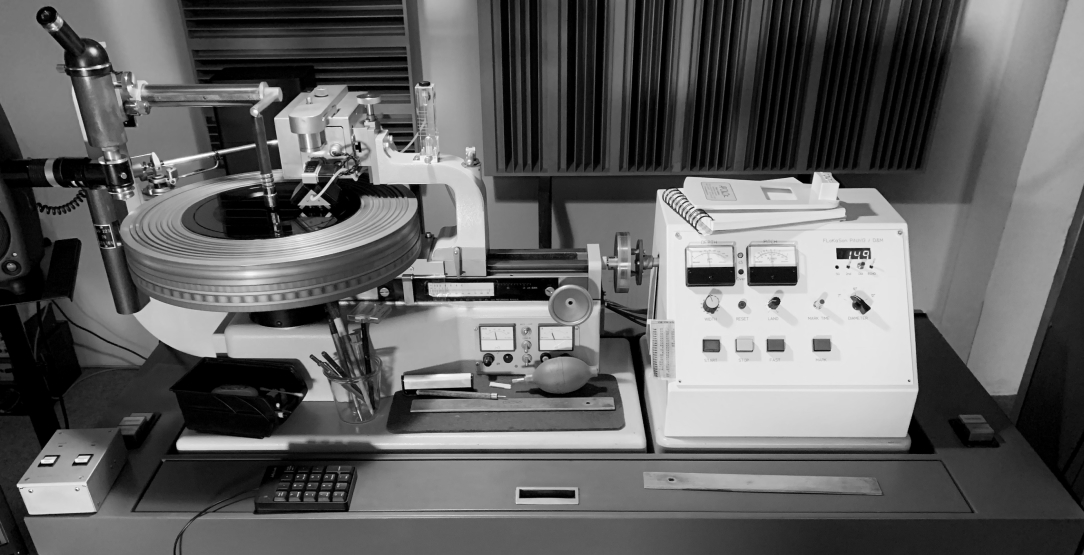

Lacquer cutting is the first phase in the production process where your vinyl masters are transferred onto lacquer discs through the utilisation of a record cutting lathe. One lacquer is made for each side of your record. Lacquer discs have an aluminium foundation coated with a delicate layer of resin, providing a pliable and soft surface for the lathe’s stylus. The lathe etches your masters in a continuous spiral pattern, commencing from the outer edge and winding inward towards the centre. The cutting head of the lathe converts the audio signal of the recording into the motion of a needle.
We predominately work with Optimum Mastering in Bristol and Dubplates & Mastering in Berlin for lacquer cutting due to their exceptional quality. Both cutting houses are extremely meticulous. If you’d like to see our audio requirements for vinyl masters, you can find our audio specifications document on our resources page or here. We’re also more than happy for you to organise your own lacquers. Please contact us for more info regarding this process.

Once your lacquers are ready, they are sent to our stamper manufacturers, Stamper Discs in Sheffield for electroforming. This is where the stampers are created to use in our pressing machines to reproduce your records. This process involves placing lacquers that have been sprayed with a thin layer of silver into an electrolysis bath where nickel is deposited and the stamper is grown.
All stampers are processed as two-step plating as this means we have a back-up in the event of stamper damage occurring. Additional stampers can be simply grown from what is called “the mother”. Furthermore, the mother can be played through to check the stamper for clicks, pops and noise as a reference if there are any issues with test pressings.
The stampers (usually an A side and a B side) are formed specifically for the model of our pressing machines and sent to us to press your records here in Thornbury.
If you’d like to find out more, our stamper manufacturers made an excellent video you can watch here.

We can press both 12” and 7” records. We are currently taking a hiatus from offering 7″ records as we are installing new machinery. Our standard pressing weight is always a minimum of 140 grams. We also offer heavyweight pressing where each record is weighed to ensure a minimum of 180 grams. Head to our pricing page to obtain a quick quote.
We stock a range of coloured compounds for you to choose from. We can also create marbled records. Please contact us to find out what marble combinations are possible. Due to the marbling process, some combinations of colours won’t produce the desired effect.

We offer a range of options for your printing needs. Our jackets, printed inner-sleeves, inserts and posters are produced locally by MMP nearby the press to ensure quick turn-around times.
For all jacket printing, we use a thick 500 UMS board stock in both a semi-gloss coated finish or an uncoated matte finish. All 12” jackets, printed inner-sleeves, inserts and posters are printed offset rather than digitally printed. This is a traditional printing method that involves manufacturing 4 custom aluminium printing plates to hold the four inks that are used in the process – cyan, magenta, yellow and black (CMYK). This method ensures superior image quality and finer details are reproduced.
We can also add a range of special finishes to your artwork. If you have something in mind, please contact us for specific quotes.
We offer shrink-wrap, plastic outer-sleeves and paper printed outer-sleeves to protect your records. Please contact us for any specific packaging needs.
Program Records acknowledges the Wurundjeri Woiwurrung people as the Traditional Owners of the land where we work. We recognise their longstanding connection and care for Country and culture. We extend our respect to ancestors and Elders past and present, and to all First Nations people.
© 2024 Program Records. All Rights Reserved.